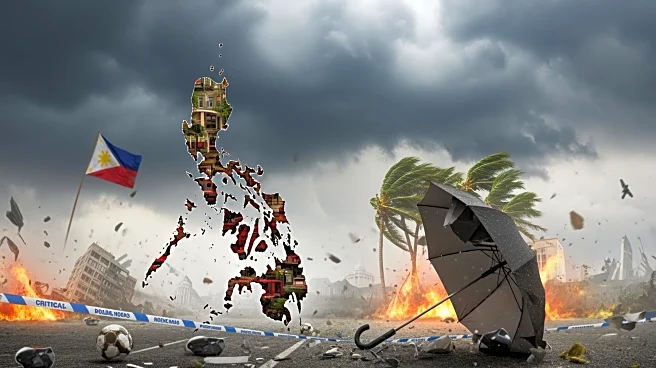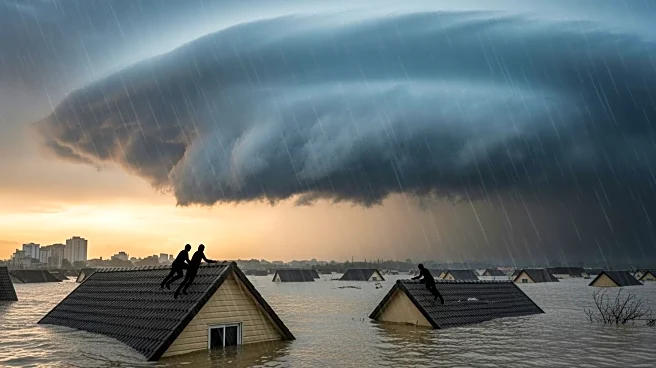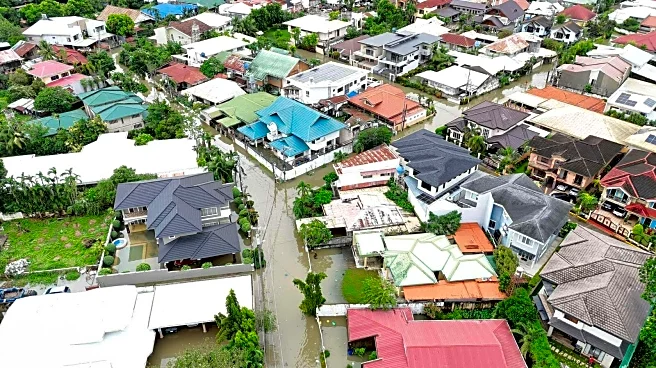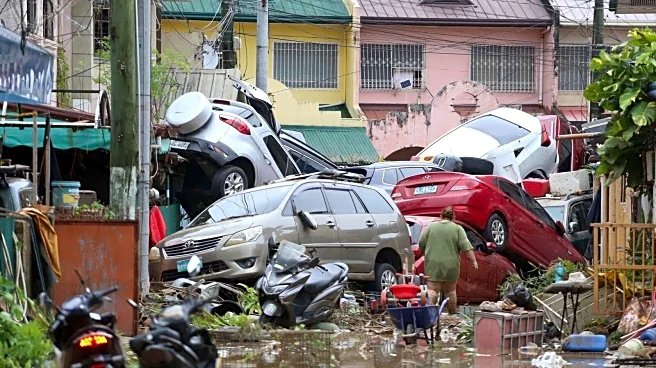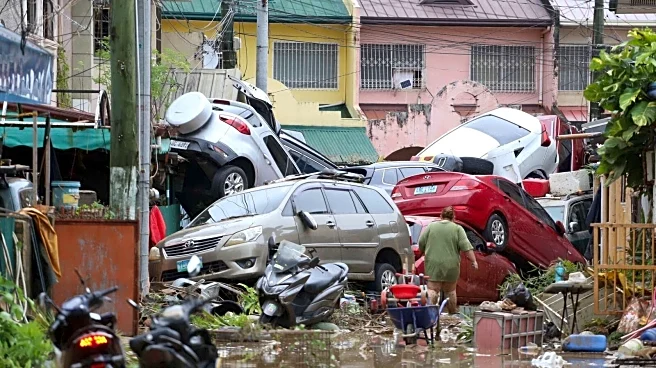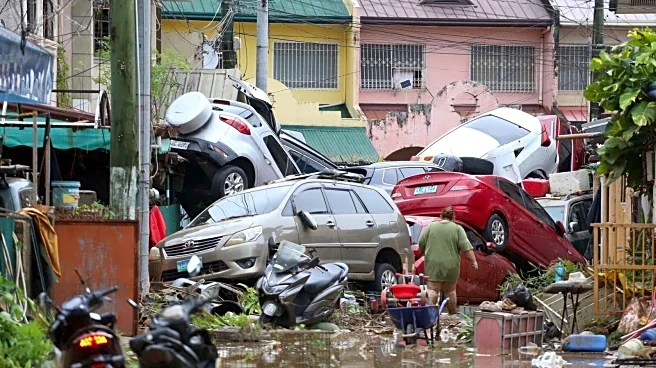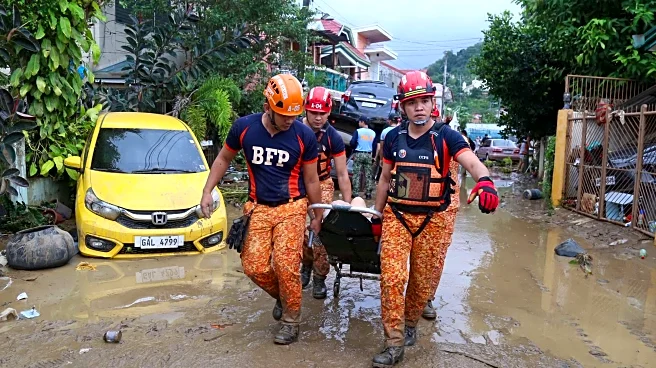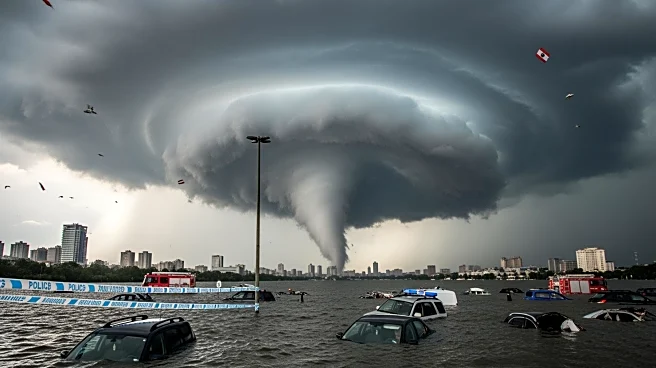What's Happening?
Typhoon Kalmaegi, known locally as Tino, has struck the central Philippines with devastating force, resulting in the deaths of over 66 individuals, including six crew members of a military helicopter that crashed during a humanitarian mission. The typhoon
made landfall in the eastern province of Southern Leyte and severely impacted the island of Cebu, which was already recovering from a recent earthquake. The storm brought sustained winds of up to 140 kilometers per hour and gusts reaching 195 kilometers per hour. The Philippine Red Cross reported that many residents were trapped on rooftops due to rising floodwaters, particularly in the coastal town of Liloan in Cebu. The typhoon has also led to the cancellation of over 160 flights and has prompted warnings of life-threatening storm surges.
Why It's Important?
The impact of Typhoon Kalmaegi highlights the vulnerability of the Philippines to extreme weather events, which are becoming more frequent and intense due to climate change. The destruction caused by the typhoon underscores the urgent need for improved disaster preparedness and response strategies in the region. The loss of life and infrastructure damage will have significant social and economic repercussions, affecting local communities' ability to recover and rebuild. The situation also raises concerns about the adequacy of current measures to protect vulnerable populations from the increasing threats posed by climate change.
What's Next?
As Typhoon Kalmaegi moves across the Visayas Islands and towards the South China Sea, the Vietnamese government is preparing for potential impacts, indicating the storm's broader regional threat. In the Philippines, rescue and recovery efforts are ongoing, with authorities focusing on evacuating stranded residents and providing aid to affected areas. The situation calls for international support and collaboration to address the immediate needs of those impacted and to strengthen long-term resilience against future natural disasters.
Beyond the Headlines
The devastation caused by Typhoon Kalmaegi serves as a stark reminder of the broader implications of climate change, particularly for island nations like the Philippines. The increasing frequency and severity of such storms are linked to rising ocean temperatures and other environmental changes. This event may prompt a reevaluation of global climate policies and the need for more aggressive action to mitigate the effects of climate change. It also highlights the importance of integrating climate adaptation strategies into national and regional planning to safeguard communities against future threats.
